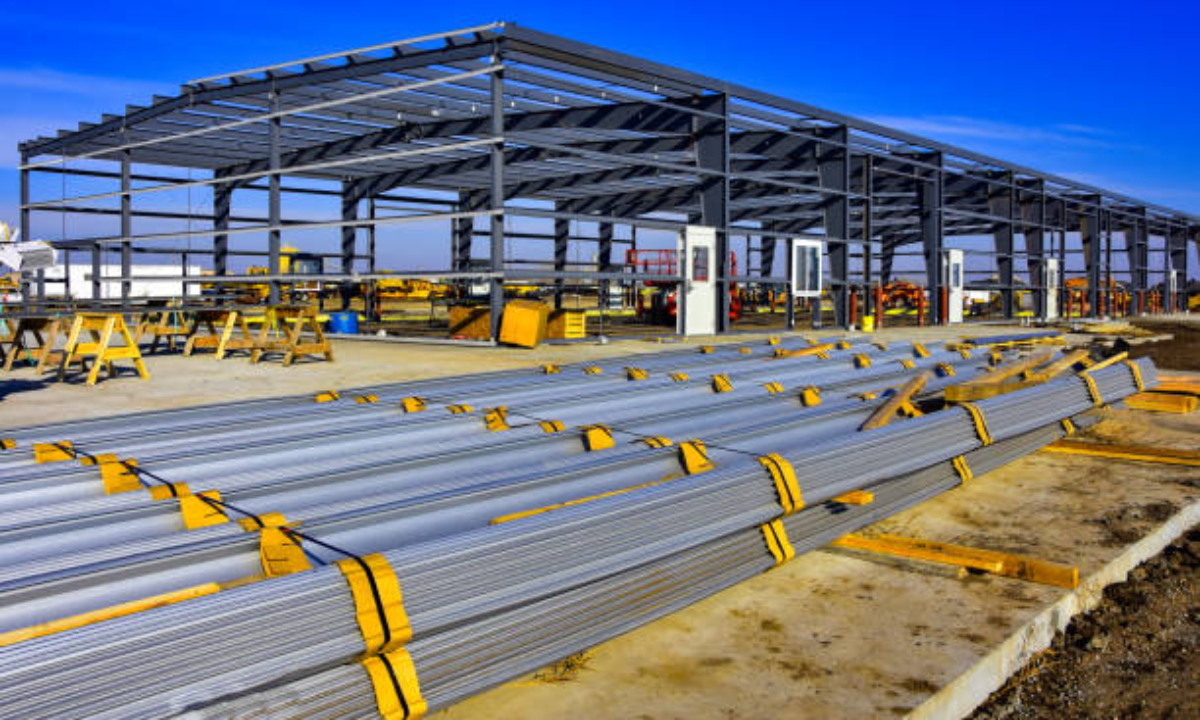Pre-engineered buildings (PEBs) are gaining popularity in India today. They are strong, fast to build, and cost-effective. But do you know what materials make these buildings so reliable?
In this blog by Shobha Globs, a trusted Pre-engineered Building Manufacturer in India, let’s explore the main materials used in pre-engineered buildings and why they are chosen.
What is a Pre-engineered Building?

A pre-engineered building is a steel structure designed and built using a factory-made approach. All components are fabricated in the factory and then assembled on-site using bolts. This method saves time and ensures strong, durable construction.
Main Materials Used in Pre-engineered Buildings
Here are the key materials that make PEBs strong and long-lasting:
1. Structural Steel
Steel is the backbone of every PEB. It forms the main frame of the building.
Types of Structural Steel:
- Hot-Rolled Sections: Are used for heavy columns and beams.
- Built-up Sections: Made by welding steel plates, commonly used for rafters and columns.
- Cold-formed Sections: Used for lighter secondary members like purlins and girts.
Why Use Structural Steel?
- High strength with less weight
- Easy to fabricate and install
- Long-lasting and recyclable
2. Purlins and Girts
These are secondary members that support the roof and wall panels.
Materials Used:
- Cold-formed Z and C sections made from galvanized or mild steel.
Benefits:
- Lightweight but strong
- Easy to handle
- Cost-effective for large spans
3. Roof and Wall Cladding
Cladding protects the building from the weather and adds to its appearance.
Materials for Cladding:
- Galvanized Iron Sheets (GI): Coated with zinc to prevent rusting.
- Color Coated Sheets: Pre-painted sheets for durability and aesthetics.
- Aluminium Sheets: Lightweight and corrosion-resistant, used for special projects.
Thickness:
Generally ranges between 0.35 mm to 0.50 mm, based on design needs.
4. Insulation Materials
Insulation is used to control the temperature inside the building.
Common Insulation Materials:
- Glass Wool or Rock Wool: For thermal and sound insulation.
- PUF Panels (Polyurethane Foam Panels): Excellent thermal insulation, used in cold storage.
- EPS Panels (Expanded Polystyrene): Affordable option for basic insulation needs.
5. Fasteners and Bolts
Fasteners hold the entire building together.
Materials Used:
- High tensile bolts (Grade 8.8 or 10.9): For strong connections.
- Galvanized bolts and screws: Prevent rusting, especially in roofs and walls.
6. Paints and Coatings
Paints and coatings protect steel from rust and weather effects.
Types of Coatings:
- Primer Coating: Zinc-rich primers for steel protection.
- Finish Paint: Polyurethane paints for UV and weather resistance.
- Galvanization: For purlins and sheets to prevent corrosion.
7. Accessories and Other Materials
PEBs also include:
- Skylights: Transparent sheets for natural lighting.
- Ventilators: For airflow and temperature control.
- Louvers: For ventilation on walls.
- Gutters and Downspouts: To channel rainwater properly.
Why These Materials Are Preferred
Here’s why these materials are chosen by any reliable Pre-engineered Building Manufacturer in India like Shobha Globs:
- Strength with less weight: Steel provides high load capacity.
- Faster construction: Factory fabrication saves time on-site.
- Long life: Galvanized and coated materials prevent rust.
- Flexibility: Easy to expand or modify in future.
- Cost-effective: Reduced labor costs and wastage.
- Environment-friendly: Steel is recyclable and reusable.
Standards Followed by Pre-engineered Building Manufacturers in India
Trusted manufacturers like Shobha Globs follow strict quality standards such as:
- IS 2062: For structural steel
- IS 801: For cold-formed light gauge steel
- IS 875: For structural loads
- IS 513: For cold-rolled steel sheets
Choosing the Right Materials for Your PEB
Here are some tips to select materials wisely:
- Check load requirements before finalizing steel grades.
- Choose cladding thickness based on location and weather conditions.
- Use insulated panels if temperature control is important.
- Ensure all fasteners are galvanized to avoid rust.
Common Mistakes to Avoid
- Using low-quality steel to save money compromises safety.
- Skipping insulation in hot or cold areas.
- Using non-galvanized fasteners – they rust quickly.
- Not applying proper coatings to steel frames.
Final Thoughts
The right materials are the key to strong and long-lasting pre-engineered buildings. From structural steel to cladding and fasteners, each material plays an important role in making your project successful.
If you are looking for a trusted Pre-engineered Building Manufacturer in India, connect with Shobha Globs. With years of experience, advanced technology, and a focus on quality, we deliver durable and affordable PEB solutions for warehouses, factories, and commercial buildings.
Key Takeaways
- PEBs use structural steel, cladding sheets, insulation, and galvanized fasteners.
- These materials ensure strength, durability, and faster construction.
- Always choose an experienced Pre-engineered Building Manufacturer in India for the best results.

